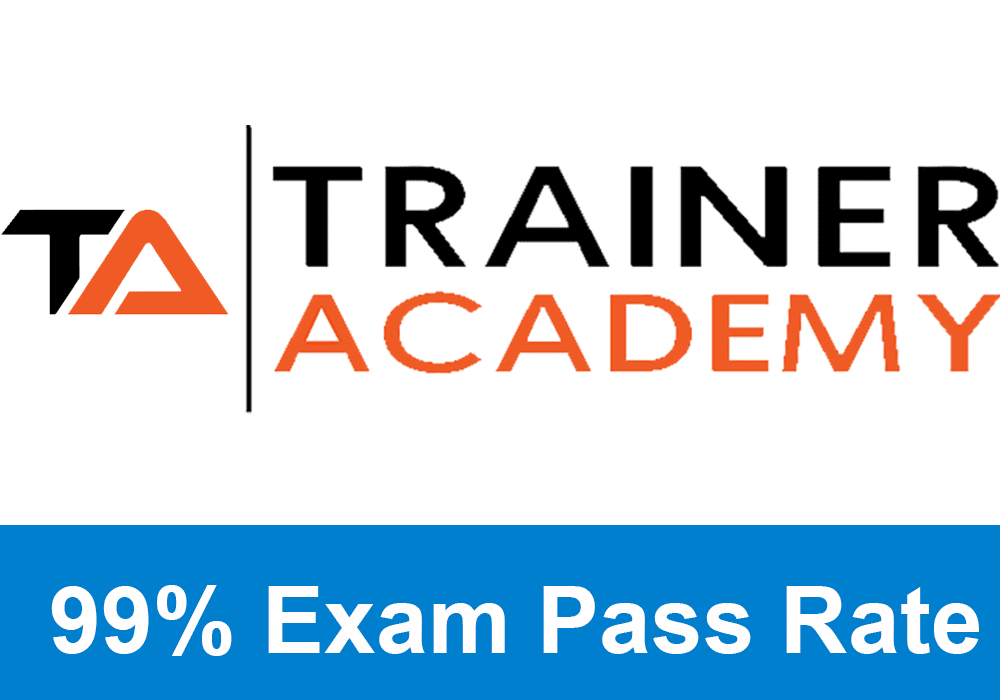
Get your copy of the NSCA CPT exam cheat sheet. It helps immensely for studying for the exam.
Make sure to check out Trainer Academy for premium NSCA CPT study materials. They will reduce study time by 50% and have an exam pass guarantee. Read my full review on them here. You can save $100 on their MVP study system with the code: PTPSUB
Chapter Objectives:
- Discuss the developmentally appropriate physical activity programs for preadolescents, demonstrating an understanding of age-specific needs and concerns.
- Describe the health benefits of exercising as a senior and outline the exercise guidelines for older adults.
- Talk about exercise recommendations and precautions for pregnant women.
Preadolescent Youth
Preadolescent youth is defined as the time before the development of secondary sex characteristics, also called puberty. This is roughly 6 – 11 for girls and 6 – 13 for boys.
Youth should be encouraged to participate in physical activities regularly. These skills will help enhance endurance, strength, flexibility, and fitness-related skills.
Academic achievement may also increase when participating in school-related things.
This promotion of physical activity for preadolescents is a major deal because of the rise in childhood obesity and cases of being overweight. So, the activity would serve to keep this lower.
Youth Physical Activity
Children should not follow any adult exercise program, as their needs differ.
Children are used to sporadic bursts of moderate and vigorous exercise with brief times of low intensity activity or even rest when it’s needed.
The assumption that children are inactive due to them not following a plan and being active more sporadically is inaccurate.
Less noticeable changes occur in children from regular standardized exercise; thus, these programs forced on children may demotivate them.
Children have higher breathing frequencies and lower tidal volumes when compared to adults.
Children have higher heart rates and lower stroke volumes in all types of exercise.
Metabolic specialization isn’t found in children as much, so the strongest child is often the one with the most endurance.
Youth should be recommended to engage in 60 minutes or more of physical activity as part of play, games, sports, transportation, and school activities.
Resistance Training for Youth
Resistance training is now known to be safe, effective, and worthwhile for the conditioning of preadolescents.
Muscle Strength Gains and Other Benefits
Studies show that children can increase strength above and beyond growth and maturation when doing a well designed program. Strength gains of 30 – 40% have been seen in children after short term programs.
Exclusive PTP CPT Offers |
||
|---|---|---|
Most Popular Cert | Best Online NCCA Cert | Best Study Materials |
Gold Standard Cert | A Good Option | Best CPT for you?  |
Neural adaptations are the typical thing responsible for strength gains.
Children that are overweight will most benefit from resistance based training.
Reducing Sport Related Injuries
There is not a lot of research on this subject, but it is assumed that since this training makes a more powerful child, then it should be assumed that it would reduce their injury rate as it does with adults.
Very few adolescents are ready for sports practice and competition. 42% based on research.
Guidelines for Youth Resistance Training
It is important to begin at a level that is equal to their physical abilities. Often the volume and intensity exceed the child’s abilities, and the rest periods prescribed between workouts are too short for proper recovery.
The general guidelines are things like:
- Qualified adults should provide supervision and instruction.
- The training environment should be safe and free of hazards.
- Resistance training should be preceded by a 5- to 10-minute dynamic warm-up.
- One to three sets of 6 to 15 repetitions should be performed on various exercises.
- Include exercises for the upper body, lower body, and midsection.
- Increase resistance gradually (e.g., about 5% to 10%) as strength improves.
- Resistance training two or three nonconsecutive days per week.
- Children should cool down with less intense calisthenics and static stretching.
- Vary the resistance training program over time to optimize gains and prevent boredom.
Teaching Preadolescent Youth
Some recommendations for personal trainers that train children are:
- Provide close supervision and listen.
- Could you speak to the kids using words they know?
- Greet each child by name when they arrive.
- Praise the kids for doing well.
- Realize training children is different from adults.
- Design activities for equal participation and fun.
- Gradually progress the programs.
- Play down the competition and focus on skills, successes, and fun.
- Remind the kids to take time to learn the skill.
- Offer many activities and regimentation.
- Emphasize the importance of adequate hydration.
- Inform parents about the benefits.
Older Adults
This is defined as men and women that are 50 and older. We also say seniors.
Benefits of Aerobic Training
Older adults receive the greatest benefit from aerobic training than any other age group.
Standard cardio can increase VO2 by 17% and higher intensity can go up to 25%.
Other benefits are reduced risks for many of the dangerous diseases that increase with age.
Benefits of Resistance Training
Cardiovascular Disease
Resistance training is safe and productive for improving the fitness and performance of older adults with cardiovascular disease. They also maintain desirable body weight and positive self-concept.
Colon Cancer
Training increases the rate of food moving through the gut and thus positively reduces the risk of colon cancer.
Type 2 Diabetes
Type 2 diabetes is reduced due to the health benefits of training. A major deal is the improved insulin response that happens.
Exclusive PTP CPT Offers |
||
|---|---|---|
Most Popular Cert | Best Online NCCA Cert | Best Study Materials |
Gold Standard Cert | A Good Option | Best CPT for you?  |
Osteoporosis
Resistance training helps maintain a strong musculoskeletal system and reduces osteoporosis.
Low Back Pain
Strengthening muscles will alleviate lower back pain occurrences.
Arthritis
Stronger muscles will improve joint function and reduce arthritic discomfort.
Depression
Self-confidence increases and counteract depression for older adults.
Muscle Loss and Metabolic Rate Reduction
Muscle tissue is replaced more often, and the metabolism is recharged, thus fighting the possible muscle loss and metabolic rate reductions.
Mitochondrial Function
Circuit strength training has increased the trained muscle tissues’ mitochondrial content and oxidative capacity.
Functional Abilities
Regular activity leads to the retention of functional abilities.
Resistance Training Guidelines for Seniors
Older adults should do 2 – 3 nonconsecutive days of resistance training for the positive effects mentioned.
The movements should be controlled speeds and involve the full range of motion.
Beginners should begin very light and work their way up.
Ranges recommended are 60 – 90% of max resistance.
Aerobic Endurance Training Guidelines for Seniors
The frequency should be 2 – 5 days per week and should last 20 – 60 minutes per session. Typically, 75% intensity is recommended.
Screening and Program Design for Seniors
First, you should check with the client’s physician for their guidelines and training modifications.
Exercise Order
Aerobic activity should be first followed by resistance training and then flexibility.
Safety and Comfort
Some conditions can affect the seniors’ comfort and safety of exercise. The Chart on page 484 shows them.
Pregnant Women
Benefits of Exercise During Pregnancy
- Improved cardiorespiratory and muscular fitness
- Better recovery from labor
- Quicker return to prepregnancy weight, strength, and flexibility levels
- Reduced belly size postpartum
- More energy reserve
- Fewer obstetric interventions
- The shorter active phase of labor and less pain
- Less weight gain
- Improved mood and self-concept
- Reduced feelings of stress, anxiety, and depression
- Increased likelihood of adopting permanent healthy lifestyle habits
Fetal Response to Exercise
Sometimes babies had reduced birth weight when mothers performed high intensity exercise throughout pregnancy. It may therefore be advised that pregnant women participate in moderate intensity exercise.
Vigorous exercise also sees 5 – 15 beats per minute increase in fetal heart rate.
Accommodating Mechanical and Physiological Changes During Pregnancy
Cardiovascular Response
Pregnant women should be able to converse and work at a 12 – 14 RPE level when going for the recommended moderate intensity.
Respiratory Response
Pregnant women increase their minute ventilation by 50%, resulting in 10 – 20% more oxygen utilized at rest. Less oxygen is available when working out, also.
Breathing requires more effort, and subjective workload and max exercise performance decrease.
Mechanical Response
Women’s center of mass changes throughout pregnancy, affecting their balance, body control, and movement mechanics.
Metabolic Response
More oxygen is needed during pregnancy and thus more energy substrate. Women need 300 more calories to meet this new metabolic demand.
Thermoregulatory Response
Basal metabolic rate and heat production are affected by pregnancy and also increased through exercise.
Contraindications for Exercise
These present absolute contraindications to exercise:
- Pregnancy-induced hypertension (pre-eclampsia)
- Ruptured membranes
- Premature labor during the current pregnancy
- Persistent bleeding after 12 weeks
- A cervix that dilates ahead of schedule (incompetent cervix)
- Significant heart disease or restrictive lung disease
- Multiple-birth pregnancy creates a risk of premature labor
- A placenta blocks the cervix after 26 weeks.
The client’s physician should see these relative contraindications before exercise participation:
- Poorly controlled type 1 diabetes, seizures, hypertension, or hyperthyroidism
- Extreme morbid obesity
- Extremely low body weight (body mass index <12 kg/m2)
- History of a very sedentary lifestyle
- Unevaluated maternal cardiac dysrhythmia
- intrauterine growth restriction in the current pregnancy
- Severe anemia
- Heavy smoking
- Chronic bronchitis
- Orthopedic limitations
These are reasons to stop the exercise and seek medical advice:
- Any signs of bloody discharge from the vagina
- Dyspnea before exertion
- Headaches or unexplained dizziness
- Chest pain
- Muscle weakness
- Calf pain or swelling
- Preterm labor
- Decreased fetal movement
- Amniotic fluid leakage
Exercise Guidelines
The following apply to healthy women without any exercise contraindications:
- Do 15 minutes of moderate physical activity daily and gradually progress to 30 minutes on at least three, if not all, days of the week.
- Resistance train major muscle groups without isometric contractions.
- Avoid the supine position after the first trimester.
- Don’t exercise past the fatigue point.
- Rhythmic and dynamic activities are preferred for reducing the risk of injury.
- Avoid sports with the potential for damage to the abdominal area.
- Large body temp increases need to be minimized.
If you want assistance wrapping your head around this material, make sure to check out Trainer Academy for some awesome NSCA study materials. They have Practice tests, flashcards, and a fantastic study guide. They even offer an exam pass guarantee.

 Have a question?
Have a question? 



Tyler Read
PTPioneer Editorial Integrity
All content published on PTPioneer is checked and reviewed extensively by our staff of experienced personal trainers, nutrition coaches, and other Fitness Experts. This is to make sure that the content you are reading is fact-checked for accuracy, contains up-to-date information, and is relevant. We only add trustworthy citations that you can find at the bottom of each article. You can read more about our editorial integrity here.